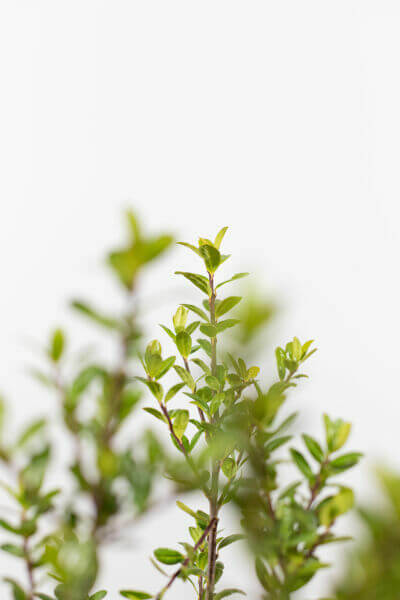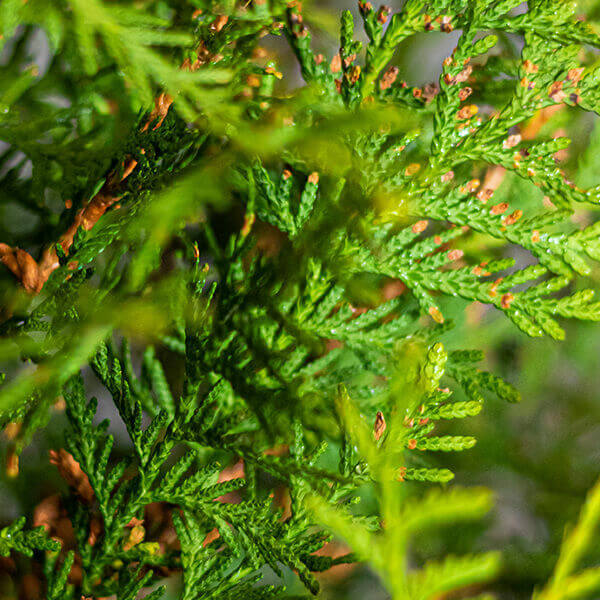Best Hedging Plants For Flowering Borders
Best Hedging Plants For Flowering Borders
Blog Article
Best Hedging Plants For Flowering Borders
Boost your garden's attraction with lavish hedge ranges such as Yew (Taxus), Thuja, Laurel, Photinia, and Bamboo, celebrated for their structural integrity and ecological benefits.
Yew and Thuja offer evergreen coverage and winter season resilience, while Laurel uses fast development and broad, fragrant leaves.
Photinia adds seasonal beauty with its vibrant red foliage, and Bamboo lends a low-maintenance, serene atmosphere.
These hedges improve air quality, minimize sound, and create tranquil, private areas.
Proper planting, spacing, and maintenance guarantee energetic development and ecological harmony.
Check out how these lavish varieties can elevate your garden's appeal and well-being.
Key Takeaways
Change Your Garden With Lush Hedge Varieties
- Select Yew for its thick, evergreen development and unrivaled durability.
- Go with Laurel for its fast growth and broad leaves, ensuring quick personal privacy.
- Select Photinia for its lively seasonal foliage, which turns a striking dark red.
- Make use of Bamboo for a low-maintenance, winter-hardy hedge with visual appeal.
- Area plants 2-3 per meter and prune regularly for ideal growth and health.
Popular Hedge Plants
When transforming a garden with lavish hedge varieties, it's necessary to consider popular hedge plants such as Yew, Thuja, Laurel, and Photinia due to their unique characteristics and benefits.
Yew (Taxus) is highly esteemed for its longevity and dense, green development, making it a prime option for sustaining landscapes.
Thuja is kept in mind for its evergreen foliage and robust winter season strength.
Photinia includes seasonal vibrancy with red leaves that darken gradually, developing vibrant visual appeal.
Laurel uses fast growth and fragrant, broad leaves, suitable for quick privacy.
Additionally, Bamboo is an excellent option for ambiance, providing a low-maintenance, winter-hardy option that enhances the garden's visual with its classy, swaying walking canes.
These choices accommodate a variety of horticultural requirements and choices.
Benefits of Garden Hedges
Garden hedges use a multitude of advantages, making them a valuable addition to any landscape. These natural barriers are affordable to implement and supply considerable wind security, improving air flow and contributing to sound reduction. The dense foliage of hedges like Thuja and Beech makes sure privacy by blocking exposure, creating a tranquil and secluded environment.
Hedges also play an important role in microclimate guideline, providing a steady environment that promotes plant development and reduces temperature level changes. Their intricate leaf structures filter contaminants, improving air quality and contributing to a much healthier garden ecosystem.
Additionally, hedges excel in sound reduction, taking in and deflecting sound waves to lower ambient noise levels. This double performance of providing both acoustic and visual privacy boosts the overall serenity and visual appeal of any garden.
Planting and Maintenance Tips
For an effective hedge, meticulous preparation of the planting area is vital. Guarantee the soil has correct pH and drainage to support strong root development.
Area the plants properly for the chosen species. Water the hedge regularly during its initial growth stage, changing as needed with seasonal changes.
Execute a organized pest control and disease prevention technique, utilizing natural or chemical treatments when required. Routinely check for aphids, mites, and fungal infections.
Apply mulch to keep wetness and reduce weeds. Seasonal pruning promotes thick development and air circulation, important for plant health.
Following these guidelines will help you cultivate a dynamic, properly maintained hedge that boosts the appeal of your garden.
Spacing and Trimming Guidelines
Spacing and Trimming Guidelines
Proper spacing and trimming are vital for cultivating healthy, visually appealing hedges. Adequate spacing guarantees each plant receives adequate nutrients, light, and airflow.
Follow these guidelines for optimal hedge maintenance:
- Spacing: Position hedge plants 2-3 plants per meter to encourage robust growth.
- Pruning Strategies: Routine pruning is necessary for keeping wanted hedge height and shape. Cut brand-new development in summertime and cut back older wood during winter season.
- Seasonal Care: Change trimming techniques and schedules according to seasonal requirements to ensure plant health.
- Hedge Height: Regularly display and cut to preserve the preferred hedge height and achieve consistent looks.
Adhering to these steps will ensure your hedge prospers, improving both the appeal and functionality of your garden.
Choosing the Right Hedge
Picking the Right Hedge
Choosing the appropriate hedge includes assessing factors such as fully grown height, foliage density, and ecological durability. Successful hedge plant choice requires comprehending each species' growth attributes and site-specific adaptability.
For instance, Yew (Taxus) provides excellent durability and dense development, while Thuja is notable for its winter season durability. Additionally, considering maintenance requirements is important; fast-growing species like Laurel or Privet need regular cutting, whereas low-maintenance choices like Bamboo or Ivy may be more suitable for those seeking very little upkeep.
Ecological factors such as soil type, light schedule, and wetness conditions ought to likewise guide the selection procedure. This cautious approach guarantees the picked hedges will flourish, supplying both functional and visual benefits to the garden landscape.
Delivery and Planting Advice
To ensure your hedge plants grow, they should be delivered by specialized carriers and planted promptly upon arrival.
Follow these important actions for effective planting:
- Soil Preparation: Enrich the soil with natural matter to enhance drain and nutrient content.
- Planting Depth: Create a trench twice the width and equal to the depth of the root ball.
- Watering Methods: Water completely after planting, keeping the soil consistently wet however not filled.
- Mulching: Apply a layer of mulch to retain moisture and reduce weeds.
Consumer Assistance and Service
Offered the vital role of prompt assistance in horticultural pursuits, our customer assistance group is available six days a week through telephone, email, and social media to use skilled suggestions and swiftly address any issues. Their dedication to quick response times guarantees client fulfillment by solving questions connected to plant health, optimum planting methods, and maintenance schedules.

Action Time
Telephone
Within 48 hours
Social Media
This extensive assistance system, enhanced by an excellent 9.3/ 10 customer rating, highlights our commitment to improving the gardening experience for each customer.
Often Asked Concerns
The Length Of Time Does It Consider Hedge Plants to Develop?
Hedge plants usually need one to 3 years to end up being totally developed, with the specific period differing by types and growing conditions.
Efficient care during this crucial period is important for robust growth. Consistent watering, vigilant weed control, and appropriate fertilizer application are essential in promoting strong root advancement.
For instance, fast-growing species like Laurel may establish faster, while slower-growing ranges such as Yew may take longer. Persistent maintenance accelerates the facility procedure, resulting in healthy and dense hedges.
What Are the very best Hedge Plants for Personal Privacy?
The question of the very best hedge plants for personal privacy includes assessing evergreen and deciduous options.
Evergreen hedges like Thuja, Laurel, and Cypress provide year-round protection, guaranteeing continuous personal privacy.
On the other hand, deciduous hedges such as Beech provide seasonal privacy, shedding leaves in cooler months.
Key maintenance pointers for privacy hedges include routine trimming, fertilizing in spring, and correct spacing-- usually 2 to 3 plants per meter.
Additionally, constant watering and persistent weed removal are vital for promoting healthy, dense development.
Can Hedge Plants Draw In Wildlife to My Garden?
Yes, hedge plants can draw in wildlife to your garden by providing necessary advantages like shelter, food, and nesting sites, thus enhancing regional biodiversity. For example, yew, holly, and laurel are excellent for bring in birds, while ivy supports a variety of pests.
However, it is necessary to keep in mind that there are some disadvantages, such as increased upkeep to manage insects and regular maintenance. Carefully picking and maintaining hedge ranges can assist balance these disadvantages and advantages, ultimately promoting a sustainable and vibrant community in your garden.
Exist Any Flowering Hedge Plants Available?
Yes, there are flowering hedge plants offered that can boost the beauty of your garden.
For example, Elaeagnus, likewise referred to as Olive Willow, produces fragrant white flowers in the fall, adding a touch of beauty.
Photinia, another popular option, showcases lively red leaves that mature into a rich green, producing a vibrant visual result throughout the seasons.
To ensure these plants flourish, it's important to practice correct pruning strategies and seasonal maintenance, such as trimming new growth in the summertime and cutting down in the winter season.
These procedures will assist keep the health and visual appeal of your blooming hedges.
How Do I Prevent Bugs in My Hedge Plants?
To prevent pests in hedge plants, employ natural pest control techniques and preserve appropriate hedge care. Present useful bugs like ladybugs, which victimize damaging insects, to produce a well balanced community.
Frequently check your hedges for signs of infestation and quickly remove any affected parts to prevent the spread. Ensure the health of your hedges by applying well balanced fertilizers and supplying adequate water.
Use mulching to keep soil wetness and correct spacing to lower plant tension and promote robust development. These practices jointly assist in minimizing pest issues and maintaining a healthy hedge.
Conclusion
In essence, choosing the right hedge ranges such as Yew, Thuja, and Laurel can change any garden into a serene sanctuary. These plants supply year-round plant, improve aesthetic appeal, and offer practical advantages like sound reduction and wind protection.
Proper planting strategies, precise spacing, constant watering, and seasonal trimming are important for optimal growth.
Reputable delivery services and expert consumer support ensure a smooth experience from purchase to planting, making it easier than ever to elevate your outside space.
Garden hedges offer a plethora of advantages, Browse around this site making them a valuable addition to any landscape. These natural barriers are cost-effective to execute and offer significant wind defense, improving air circulation and contributing to sound reduction. The thick foliage of hedges like Thuja and Beech guarantees personal privacy by obstructing presence, producing a secluded and tranquil environment.

Pruning Strategies: Routine pruning is essential for keeping wanted hedge height and shape. Cut brand-new growth in summer and cut back older wood during winter season.
Report this page